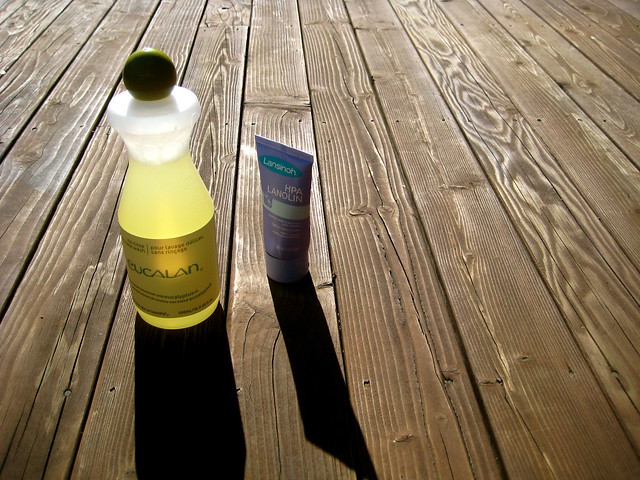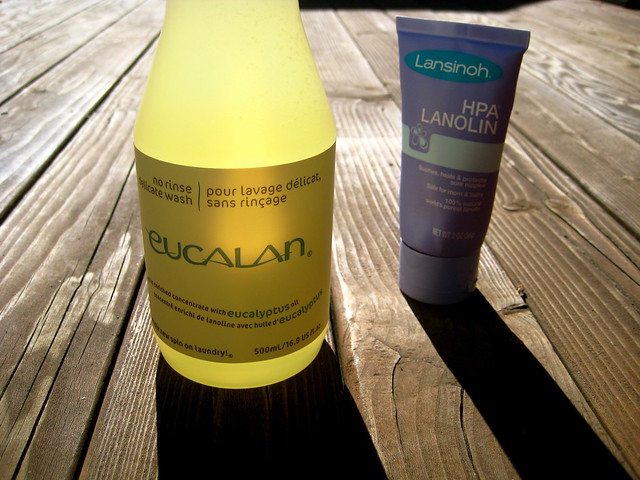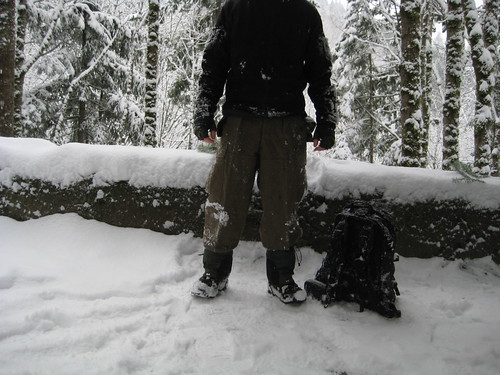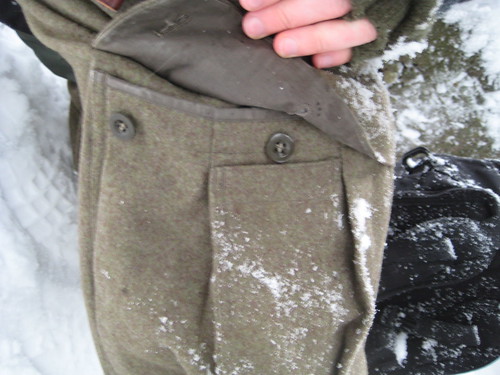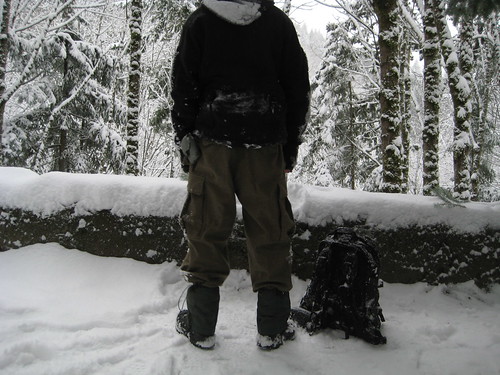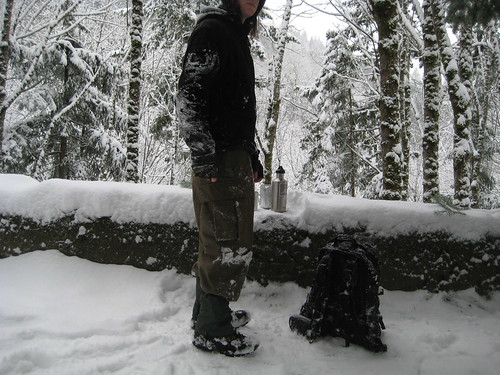Lanolizing Wool
Lanolin is a kind of wax that sheep and other wool-bearing animals produce to protect their coats. It is, in fact, a waterproofing agent. Any lanolin that remains in the wool after shearing is generally stripped out during the process of turning the hair into clothing, thus reducing the wool’s ability to shed water.
Commercially, lanolin is often used as a skin treatment product for humans. Lansinoh, in particular, makes a pure-lanolin nipple cream for breast-feeding mothers.
I first learned about lanolin from a comment on my review of West German wool pants. Jenne, the commenter, recommended washing wool products using something called Eucalan. Eucalan is a natural wash that deposits lanolin in the wool. Rinsing isn’t necessary with Eucalan, so much of the hassle (and danger of felting) that is usually associated with washing wool can be avoided.
For an extra treatment, Jenne recommended dissolving a small amount of Lansinoh’s pure lanolin in hot water before adding the Eucalan.
I was intrigued by this method. The no-rinse aspect made it simpler than carefully washing wool with Dr. Bronner’s, which was my previous choice. And increasing the health and functionality of my wool by restoring the natural oils made good sense – the same thing must be done to leather. I bought both the Eucalan and the nipple cream.
Eucalan comes in a few different scents. I first bought the unscented version, which seemed most appropriate for outdoor wear. Later I bought a jug of the Eucalyptus version. Eucalyptus oil is a deterrent to moths and fleas, so Eucalan recommends using this version before storing wool garments for a while. (The eucalyptus scent is very subtle after the wool has been dried – you’re not going to go around smelling like flowers.)
I’ve since washed my West German wool pants, West German wool knickers, Italian wool knickers, and two Pendleton wool shirts – the majority of my non-merino wool clothing – in Eucalan with added Lansinoh and have been pleased with the results. I recommend giving it a shot if you wear wool in wilderness settings.
The Process
- Dissolve a small amount (about one inch) of Lansinoh HPA Lanolin in hot water
- Add enough room-temperature water to cover the garment to be washed
- Add about two cap-fulls of Eucalan and mix it in
- Add the wool to be washed
- Let soak for 15 – 30 minutes
- Pull out the wool, hold it up, and let the water drip out for a minute or two
- Lay the wool out on a dry towel
- Roll up the towel, gently squeezing out the water
- Lay flat to dry for 24 – 48 hours
